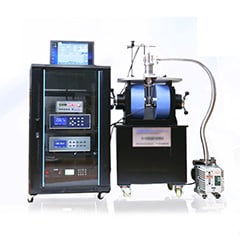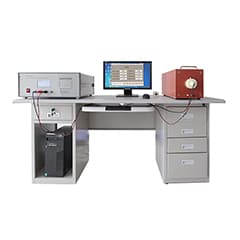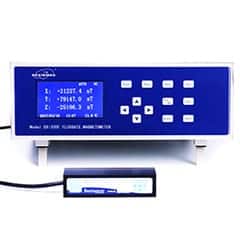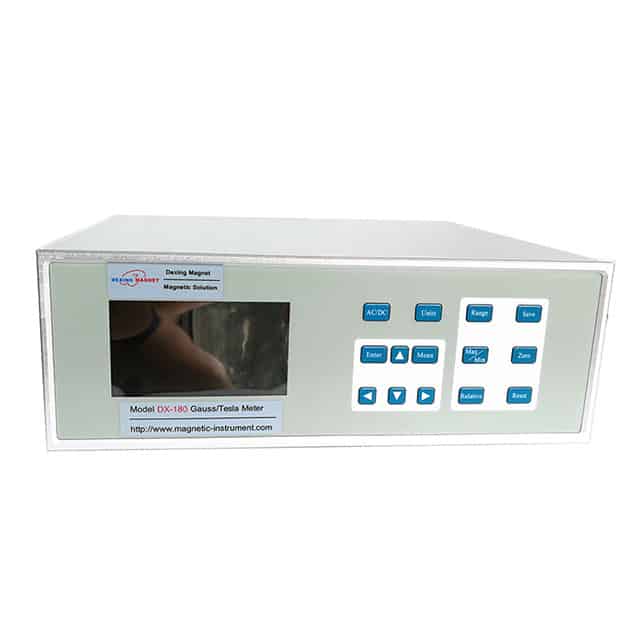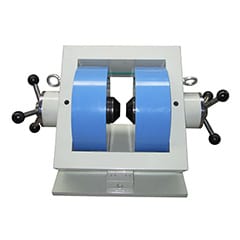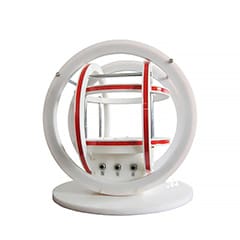products categories
contact us
- If you have questions, please contact us, all questions will be answered
- Tel : 18030236818
- Fax : +86-592 5237901
- Email : dexing@china-dexing.com
Hall Effect Measurement System
Principle of vibrating sample magnetometer
Vibrating sample magnetometer is a high-sensitivity magnetic moment measuring instrument based on the principle of electromagnetic induction. The induced voltage generated by vibration in the detection coil is proportional to the magnetic moment, amplitude and vibration frequency of the sample. On the basis of ensuring the inconvenient amplitude and vibration frequency, the magnetic moment of the sample to be measured can be calculated by measuring the voltage with a phase-locked amplifier.
Principle of vibrating sample magnetometer
If a small sample (approximately a magnetic dipole) vibrates slightly along the Z-axis at the origin, a small coil placed nearby (axially parallel to the Z-axis) will generate an induced voltage:
Eg the delta cosine omega t = G = km,
Where G=π0NA is the geometry of the coil due to 74r3VSM,ω is the vibration frequency,δ is the amplitude,m is the magnetic moment of the sample,N and A are the number of turns and area of the coil. In principle, the proportional coefficient k between EG and m can be calculated to obtain the magnetic moment of the sample from the measured induced voltage. However, this calculation is very complicated. In fact, the proportional coefficient K is determined by experimental method, that is, by measuring the induced voltage eg of the sample with known magnetic moment M, k=eg is obtained. This process is called calibration. In the calibration process, the closer the m specific parameters (magnetic moment, volume shape and position, etc.) of the standard sample are to the sample to be tested, the more accurate the calibration is.
VSM is measured by open-circuit method. Magnetic charges exist on the surface of the magnetized sample, and the surface magnetic charges generate a demagnetization NM(N is a demagnetization factor, related to the specific shape of the sample) in the sample. So in the sample, the total magnetic field is not the magnetic field H generated by the magnet, but h-nm. The measured curve should be modified by demagnetization factor, replacing H with H-nm.
The position of the sample has an effect on the sensitivity of the measurement. The sample moves away from the center along the line direction of the two coils (x direction), and the induction signal increases; Away from the center in the other two directions (y and Z), the induction signal becomes smaller. The central position is the minimum value in the X direction and the maximum value in the Y and Z directions, and is the least sensitive position of the induction signal to space, known as the saddle point. The small region near the saddle point is called the saddle region. When measuring, the sample should be placed in the saddle area to minimize the error caused by the finite size of the sample.
Structure of vibrating sample magnetometer
The basic vibrating sample magnetometer consists of a magnet and a power supply, a vibration head and a driving power supply, a detection coil, a phase-locked amplifier and a Hall magnetometer for measuring magnetic fields, as shown in the figure
The vibrating head is used to make the sample vibrate slightly. The instrument adopts electromagnetic drive mode (loudspeaker structure), this vibration mode structure is light, easy to change the frequency and amplitude, convenient external control. In order to avoid the interference caused by the vibration transmitted to the detection coil through the electromagnet, the vibration head adopts the double vibration structure, one coil is connected with the sample rod, the other coil is connected with the copper block with the same mass as the vibration rod, the two coils vibrate opposite in the magnetic field, the phase difference is 180° in order to make. Vibration is stable and amplitude stabilization measures are taken. A permanent magnet is fixed on the vibrating rod, and the permanent magnet vibrates with the sample. When the vibration amplitude changes, a pair of detection coils placed near the permanent magnet will detect the change and feed back to the driving power supply, which will adjust the vibration amplitude according to the feedback signal to make the amplitude stable. Because the vibration head is a strong signal source, and the frequency is consistent with the frequency of the detection signal, so the probe and the detection coil to maintain a long distance, with vibration rod to transfer vibration, and in the vibration head with a shield cover, to prevent induction signals. Vibration frequency should avoid 50Hz and its integer multiple as far as possible to avoid interference. The vibrating head can rotate at any Angle in the horizontal plane to measure the sample in different directions.
The magnet is an electromagnet with a pole surface diameter of 5cm and a pole spacing of 3cm. The maximum magnetic field can reach 1.5T. The electromagnet power supply is dc steady current power supply, and the maximum output current is 10A. The magnetic field is measured by hall magnetometer, divided into 4 gears, the maximum range is 20T, the minimum resolution is 10-4T, and calibrated by nuclear magnetic resonance method.
The magnetic moment is measured by a detector coil and a phase-locked amplifier with a pair of detector wires
Application of vibrating sample magnetometer
Vibrating sample magnetometer is suitable for testing the following materials: ferromagnetic, diamagnetic, paramagnetic and antiferromagnetic materials, anisotropic materials, magnetic recording materials, magneto-optical materials, rare earth and excessive elements, amorphous metals, high permeability materials, metalloproteins and other forms of ferromagnetic materials. Weak magnetic, paramagnetic and other samples can be measured by vibrating sample magnetometer, but the sensitivity is decreased. In addition, vibrating sample magnetometer is also suitable for lump, powder, thin slice, single crystal, liquid and other shapes and forms of materials.






